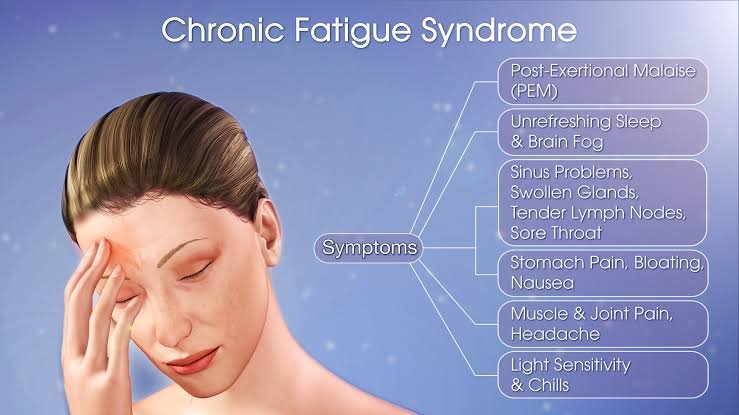Chronic fatigue syndrome (CFS), also known as myalgic encephalomyelitis (ME), is a long-term illness that causes extreme fatigue that doesn’t improve with rest. Other symptoms may include muscle pain, headaches, sleep problems, and problems with thinking and memory.

What is Chronic fatigue syndrome (CFS) and its symptoms
The exact cause of CFS is unknown, but it is thought to be caused by a combination of factors, including:
- A viral infection
- An autoimmune reaction
- A problem with the way the body’s energy is produced or used
- A problem with the brain’s ability to regulate sleep and wakefulness
There is no cure for CFS, but there are treatments that can help relieve symptoms. These include:
Exercise: Gentle exercise, such as walking or swimming, can help improve stamina and energy levels.
Cognitive behavioral therapy (CBT): CBT can help people with CFS learn how to manage their symptoms and improve their quality of life.
Medication: There are no medications that specifically treat CFS, but some medications may help relieve symptoms, such as pain relievers, antidepressants, or sleep aids.
If you think you may have CFS, it is important to see a doctor for diagnosis and treatment. There is no one-size-fits-all treatment for CFS, so it is important to work with your doctor to find what works best for you.
Here are some additional things you can do to help manage CFS:
- Get enough sleep.
- Eat a healthy diet.
- Avoid caffeine and alcohol.
- Manage stress.
- Find ways to relax and de-stress.
- Join a support group for people with CFS.
CFS can be a challenging condition to live with, but there are things you can do to help manage your symptoms and improve your quality of life.
Exercise can be beneficial for individuals with chronic fatigue syndrome (CFS), but it’s crucial to approach it with caution and in consultation with a healthcare professional. Here are some general guidelines for exercise with CFS:
1. Start Slowly: Begin with gentle, low-impact exercises like walking, swimming, or tai chi. Start with very short durations and gradually increase as tolerated.
2. Pacing: Learn to pace yourself. Use the “stop before you drop” approach, where you stop an activity before you become overly fatigued.
3. Stretching: Incorporate gentle stretching exercises to improve flexibility and reduce muscle tension.
4. Strength Training: Include light resistance or strength training exercises to maintain muscle tone. Start with very light weights or resistance bands.
5. Aerobic Exercise: Once you build some stamina, consider adding short sessions of low-intensity aerobic exercise, such as stationary cycling or gentle aerobics.
6. Monitor Symptoms: Keep a diary of your activities and symptoms to identify patterns and adjust your exercise routine accordingly.
7. Rest: Ensure you get enough rest and sleep to support your recovery.
8. Avoid Overexertion: Avoid pushing through fatigue, and respect your body’s signals.
9. Gradual Progression: Slowly increase the duration and intensity of your exercises only when you can do so without worsening symptoms.
10. Seek Professional Guidance: Work with a healthcare professional or physical therapist who has experience with CFS to create a tailored exercise plan.
Remember that what works for one person with CFS may not work for another, and individual limitations vary. Always consult with your healthcare provider before starting any exercise program to ensure it’s safe and appropriate for your specific condition.
Malaise | Weakness or feeling low
Sciatica Pain Signs and Management
